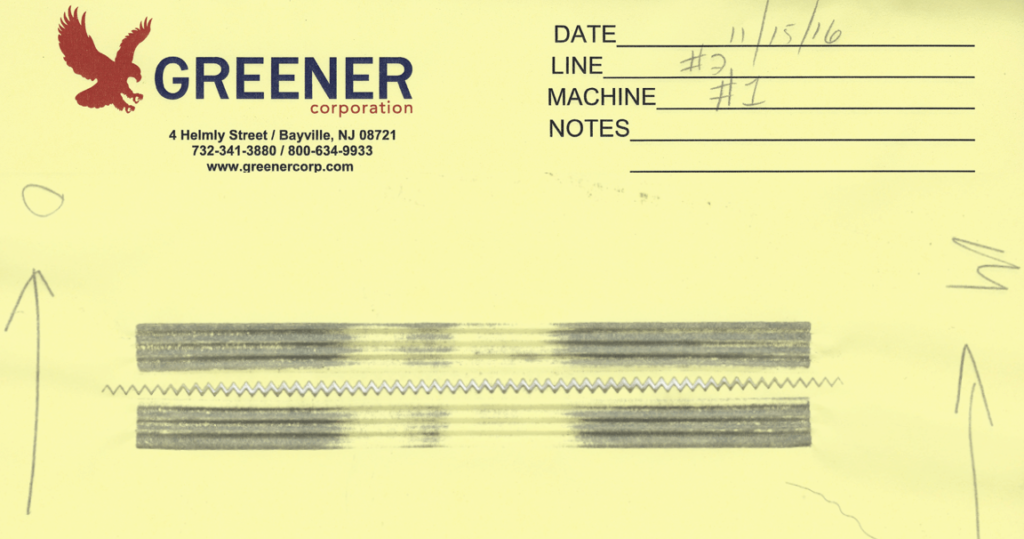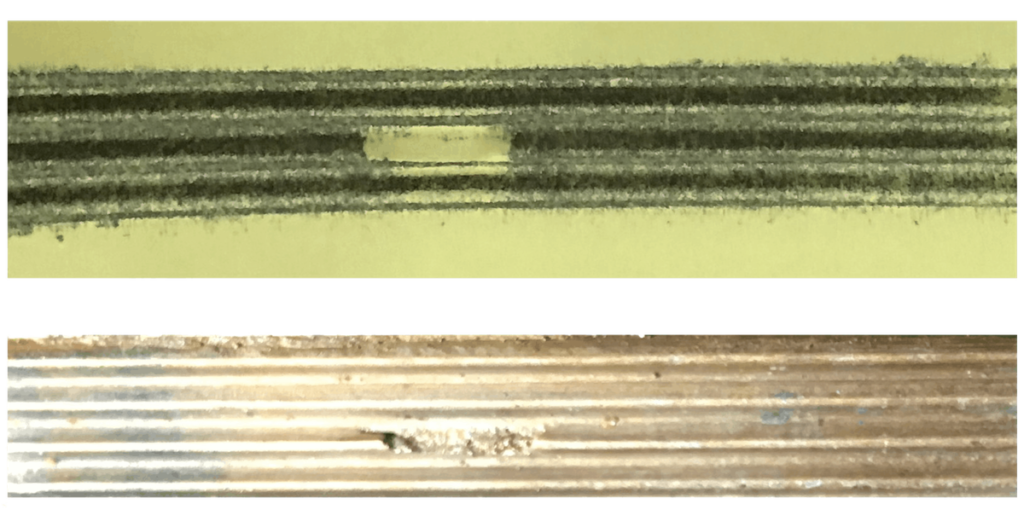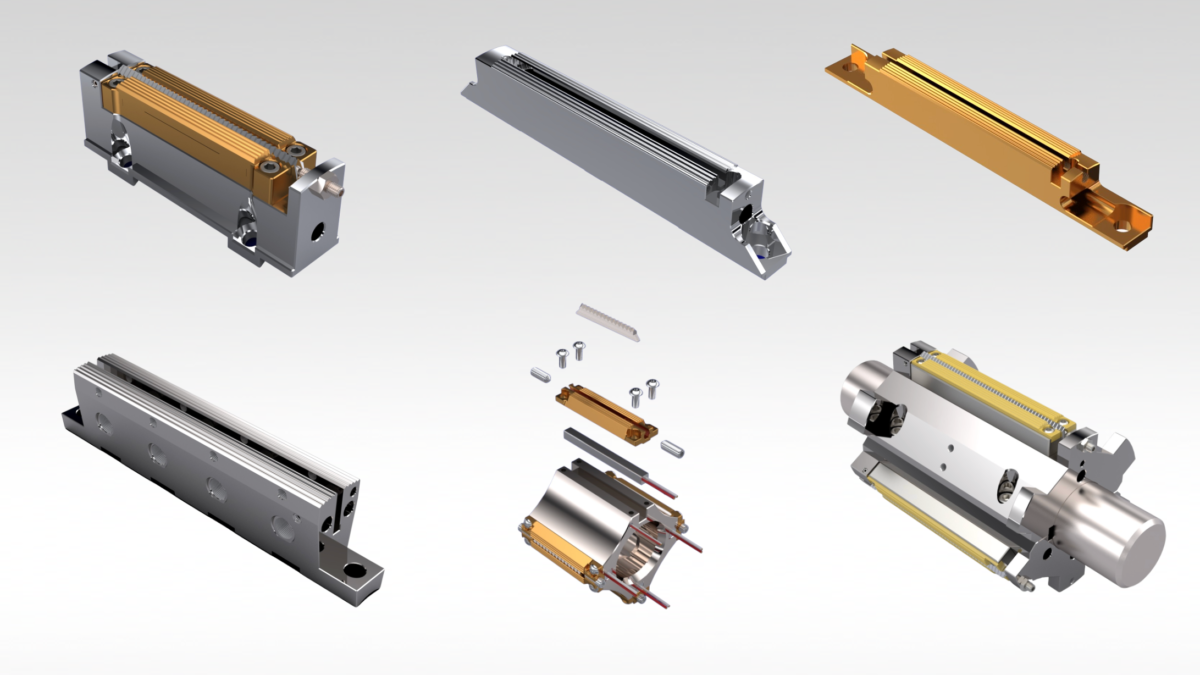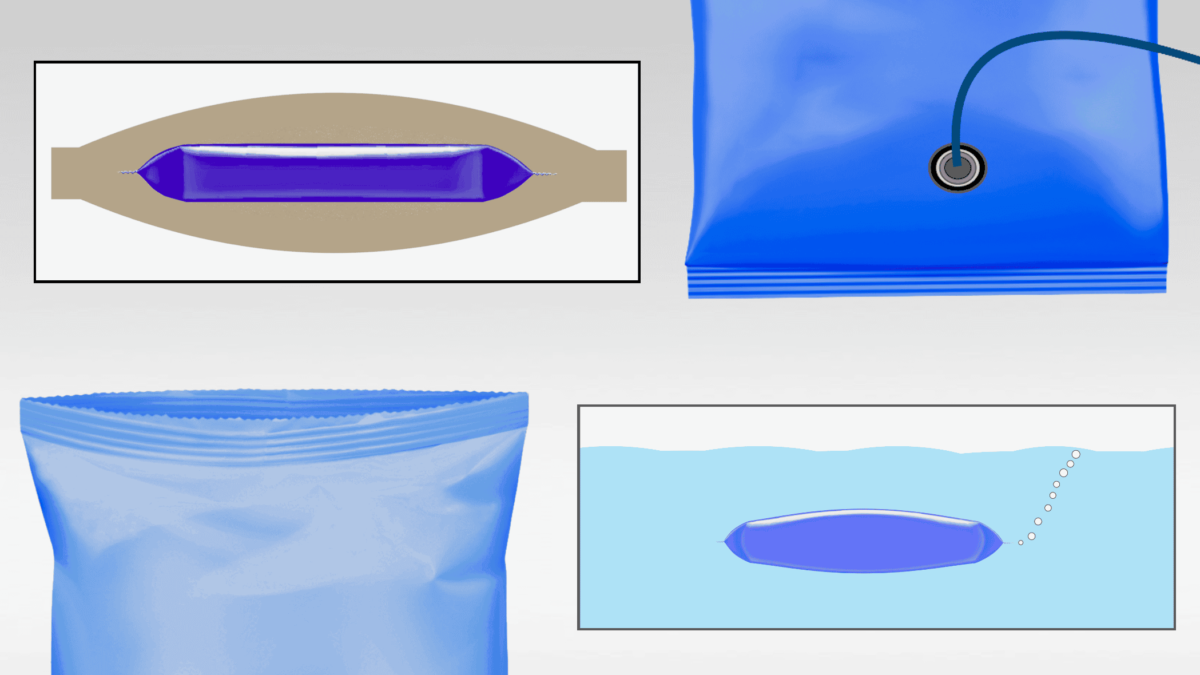In this Greener Tech Bite we analyze six sealing jaw carbon impressions and explain how each was used to troubleshoot problems on flow wrappers or vertical form fill seal baggers.
When a machine is down, carbon impressions will help you get back up and running more quickly. And by regularly making and inspecting impressions, you can discover and fix conditions that cause chronic downtime and force you to accept minimally acceptable seal quality and appearance.
Impressions take less than a minute to make, if you keep the right type of paper readily available.

• For rotary sealing heads running cold seal film, use carbon paper to set-up and adjust sealing jaws.
• With heat seal film, use carbon paper just for the initial installation, when the jaws are cold.

• Once rotary jaws are hot, carbon paper begins to melt and no longer provides a clear impression.
• Switch to carbonless paper to fine tune setup and make additional adjustments.

Cold or Hot Reciprocating Jaws – CARBON PAPER
• For reciprocating sealing jaws, use carbon paper for initial installation and all adjustments.
• Carbonless paper is not properly activated by these jaws and should be avoided.
On All Applications
Take impressions with the appropriate paper once or twice a week to assess set-up and sealing jaw condition, and as needed to troubleshoot problems.
1. Plain Paper Impressions
Plain paper does not provide adequate details. This paper impression led a mechanic to think that sealing jaw set-up was good.

But a carbonless paper impression revealed that jaw clearance was uneven from end to end. In addition, the alternating light and dark lines showed that the serrations were misaligned.

Record as many details as possible on your impressions, including the line, machine, and the pair number if there are multiple jaws, the direction of product flow, and sealing jaw orientation—noted here as “O” for operator side.
2. Uneven Pressure on Upper and Lower Seals
This next impression was made by reciprocating jaws on a vertical bagger. It shows uneven pressure on the upper and lower seals.

This disparity is often created by damage or product buildup on the jaw mounting surfaces or by misalignment of the jaw carriage. But here the cause was worn linear bearings. When the bearings were replaced, a problem with leakers disappeared.
3. Product Contamination
These carbon impressions, taken after nine of ten packages failed a seal quality test, show extensive sealing jaw contamination.


After the jaws were cleaned, the failure rate went down to zero.


Product contamination can keep you from diagnosing and addressing other issues. In this case impressions made with clean jaws revealed that the serrations were misaligned. Realigning the sealing jaws transformed packages from merely “acceptable” to premium quality and helped prevent future problems and downtime.
4. Wear – Reciprocating Jaws
Here a carbon impression from reciprocating jaws on a vertical bagger revealed wear as the cause of poor seals.

5. Wear – Rotary Jaws
This carbonless paper impression clearly shows the wear on rotary jaws from a flow wrapper.

6. Damage
Impressions also help you discover and assess sealing jaw damage. This carbonless impression exposed a significant weak spot caused by damage and confirmed that the jaws needed to be replaced.

Take sealing jaw impressions regularly to optimize seal quality, package appearance, and productivity. You can purchase carbon and carbonless paper from Greener or many other sources.

For assistance diagnosing your sealing jaw impressions and troubleshooting problems, contact Greener Corporation. We develop and deliver full process solutions, worldwide.


